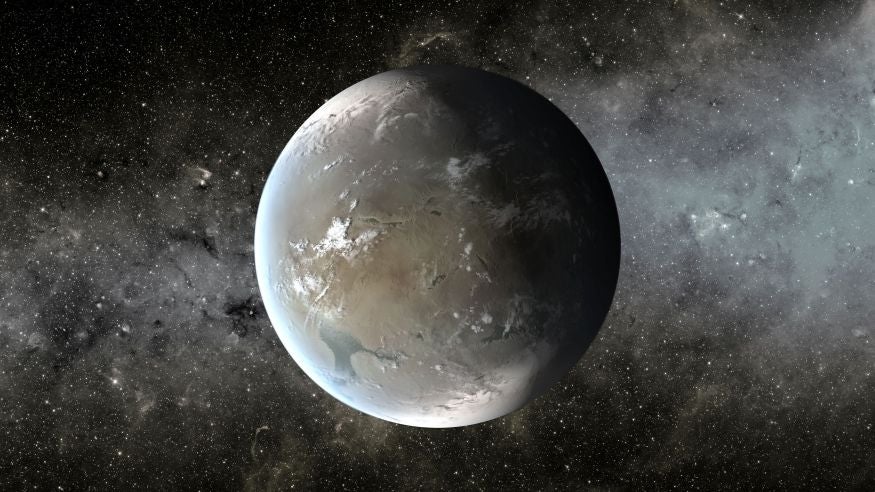Kepler 62f: Earth-like planet 1,200 light years away 'could be habitable'
New computer simulations of possible kinds of atmosphere that might be found on Kepler 62f suggest it could sustain life

An Earth-like planet orbiting a star 1,200 light years away could have conditions suitable for life, say scientists.
Kepler 62f is about 40 per cent larger than the Earth and may possess surface oceans.
It is the outermost of five planets circling a star that is smaller and cooler than the sun discovered by the American space agency Nasa's Kepler space telescope in 2013.
New computer simulations of possible kinds of atmosphere that might be found on Kepler 62f suggest it could sustain life.
Lead scientist Dr Aomawa Shields, from the University of California at Los Angeles, said: "We found there are multiple atmospheric compositions that allow it to be warm enough to have surface liquid water. This makes it a strong candidate for a habitable planet."
Watch: This is not the only Earth-like planet NASA has discovered

Because of Kepler 62f's distance from its host star, it would need the greenhouse effect of a thick carbon dioxide-rich atmosphere to keep its water from freezing, the research showed.
However certain types of orbit could allow the planet's surface temperature to rise above freezing at certain times of the year - even with much lower levels of carbon dioxide, closer to those found on Earth.
"This might help melt ice sheets formed at other times in the planet's orbit," said Dr Shields.
More than 2,300 exoplanets outside the solar system have been identified, and a few thousand others are as-yet unconfirmed planetary candidates.
Only a couple of dozen are known to orbit the "habitable zones" of their stars, the narrow region just the right distance away to allow the existence of liquid surface water.
PA
Join our commenting forum
Join thought-provoking conversations, follow other Independent readers and see their replies
Comments